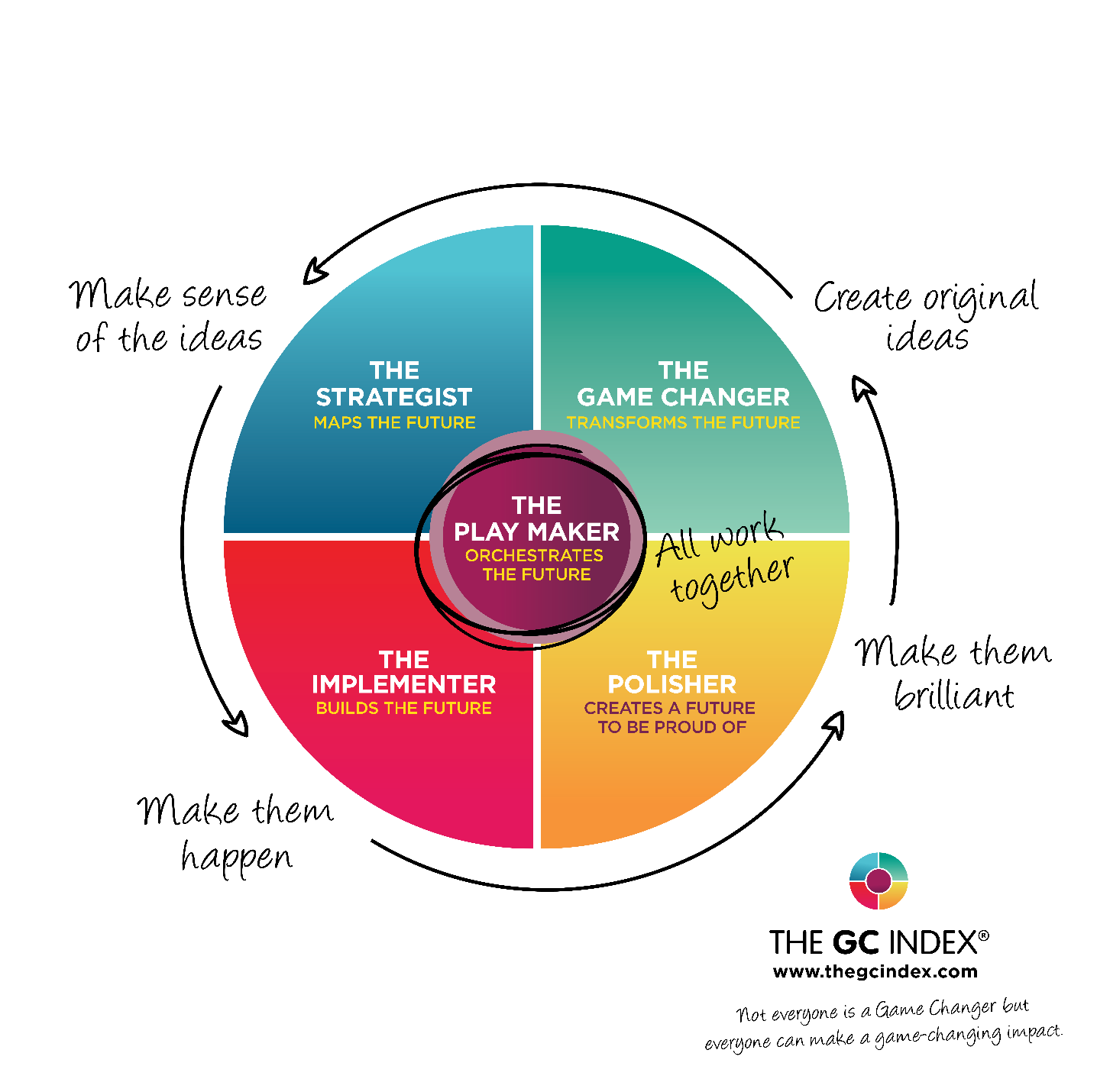In today’s fast-paced business environment, leaders are constantly seeking new ways to build high-performing teams that can drive real impact. One of the most powerful tools I use in my work with clients is the GC Index, a revolutionary framework that helps organisations understand how individuals contribute to business success based on their energy for impact.
In a recent episode of my IMAPCTFUL Teamwork podcast, I had the pleasure of speaking with Nathan Ott, Chief Polisher of the GC Index, about how this tool is transforming the way teams operate. In this blog, I’ll explore the key takeaways from our conversation and show you how leveraging the GC Index can elevate your team’s effectiveness.
What is the GC Index?
The GC Index is a data-driven tool that measures an individual’s energy for impact, rather than personality or skills. Unlike traditional assessments, it focuses on the unique way each person naturally contributes to achieving business goals.
It categorises individuals into five key proclivities:
- Game Changers – Visionaries who generate original ideas and challenge the status quo.
- Strategists – Big-picture thinkers who create structured plans to drive success.
- Implementers – Action-oriented doers who ensure things get done efficiently.
- Polishers – Perfectionists who continuously refine and improve.
- Playmakers – Relationship-builders who connect people and create a collaborative culture.
Every person has a unique blend of these energies, and when a leader understands this, they can optimise team dynamics and maximise performance.
Why Energy for Impact Matters More Than Personality
Traditional hiring and team development often rely on personality assessments, but these can be too broad and subjective. The GC Index provides concrete data on how someone actually drives impact, helping leaders place people in roles that align with their natural strengths.
Nathan shared an example from a construction company where a leadership team of mostly Implementers was struggling to make strategic decisions. The only Strategist in the group—who happened to be the only woman—felt unheard. Once they used the GC Index, they realised she wasn’t being ignored because of gender bias, but because the group’s natural inclination was toward execution rather than strategy. Once they recognised her role as a Strategist, they began valuing her insights differently, leading to better decision-making.
This is a game-changer for organisations trying to foster diversity and inclusion. Instead of focusing on surface-level demographics, it highlights how people truly add value based on their thinking and action styles.
How the GC Index is Being Used to Drive Team Performance
1. Building Teams That Deliver Results
Many organisations create teams based on job titles or departments, but the GC Index allows leaders to form teams dynamically based on the type of work required. For example, a business launching a new product might need Game Changers and Strategists in the early stages, while Implementers and Polishers drive execution.
2. Reducing Team Friction and Misalignment
Ever wondered why some teams struggle with endless meetings and indecision? It’s often because they have too much of one proclivity and not enough of another. Nathan and I discussed how recognising proclivities helps teams balance strengths and weaknesses. If a team lacks Playmakers, communication may break down. If they lack Implementers, ideas never turn into action.
3. Enhancing Leadership Self-Awareness
As a leader, understanding your own proclivities is crucial. Nathan shared how he previously struggled as a traditional CEO because his strengths lie in Polishing and Game Changing, rather than strategic planning. By appointing a Strategist as his second-in-command, he created a more effective leadership structure that allowed both of them to play to their strengths.
This is a powerful lesson for any leader: You don’t have to be great at everything, but you do need to surround yourself with people who complement your energy for impact.
Making GC Index Data Actionable
It’s one thing to assess a team’s proclivities; it’s another to use the insights to drive real change. Here’s how you can start:
- Assess your team – Use the GC Index to map out where each person’s energy for impact lies.
- Align roles with strengths – Ensure individuals are working in areas where they thrive.
- Create dynamic teams – Build project teams based on the type of work, not just hierarchy.
- Adjust leadership styles – Lead in a way that leverages the strengths of your team.
- Use GC Index insights in hiring – Hire based on energy for impact rather than just experience.
Let’s Talk About Your Team
The GC Index has already transformed over 9,000 organisations, helping leaders create more collaborative, engaged, and high-performing teams. If you’re struggling with misalignment, disengagement, or underperformance in your team, I’d love to help.
Are you ready to unlock the full potential of your team? Let’s have a conversation!
Book a call with me to explore how the GC Index can revolutionise your team’s performance.
Until next time, do good, be great!
Show Notes:
Here are the highlights from this episode:
00:00 Introduction to the GC Index
08:24 Understanding Energy for Impact
09:28 Explaining Proclivities and the GC Index Model
11:09 The Role of Different Proclivities in Organizations
12:59 Personal Experiences with the GC Index
16:36 The Importance of Team Dynamics
20:21 Diversity and Inclusion with the GC Index
24:29 Real-World Applications and Success Stories
34:18 Conclusion and Final Thoughts
Further Reading:





